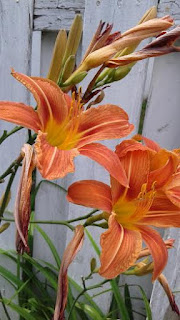Over the years I have designed and grown a wide range of gardens. They ranged from a one pot with tomatoes and basil on my balcony to a 1 acre commercial operation. One reoccurring question raised through all these various gardens’ projects over a 17 year period is whether to grow flowers or not.
I am not talking about edible flowers but flowers that are grown purely for ornamental or ascetic purposes either as cut flowers for the table or bouquets or dried flowers for various craft purposes.
To clarify the discussion further, I am not discussing commercial growing of cut flowers or flowers for drying, both of which could be solid business opportunities, but rather flowers grown purely for personal use and ascetic qualities.
There are gardeners and then there are gardeners; some will only grow food and scoff at those who grow, for example, gladiolas. Te glad has no edible value but it perhaps one of the most beautiful flowers that I have seen.
I have grown glads in containers on my balcony and in the backyard, just so I could have them to cut and bring inside to admire.
I remember on evening some years back I was sitting on my balcony looking up at the sky when I noticed a small bird hover near the deep red glads growing in the container. It was a hummingbird. It paused in its flight and gave me a look that said hey what you are doing here this I my space.
The hummingbird bird came back at approximately the same time every night for a week. Now that is what I call a good reason to grow flowers; to attract these winged jewels.
The group of gardeners who want to grow only food; or plant trees will argue that growing flowers for purely aesthetic purposes is a waste of time and resources (soil, water) but I simply cannot agree.
Beauty is a function and one that deserves our respect and attention. Spend, even20 minutes, in a backyard near the flower garden, feel the sun warming your face, hear the hum of the bees and watch the butterflies float from plant to plant and you will see the value that beauty brings. The dance of life is taking place before your eyes.
Besides a cutflower garden can attract the beneficial friends, (bees and other insects) to you garden that will help you do the work.
My perspective is this; if you have enough space for a garden then take a diverse approach, grow the vegetables that you want for your table but add a few herbs and a few cut flowers into the mix so that your garden will not only provide a greater bounty for your table, but so that you set out a portion for your garden helpers.
The successful gardener does not work alone. Another saying that is worth remembering here is that we do not live by bread alone; vegetables will feed your hunger but flowers will feed your heart. A thriving garden is a mixed planting garden, Herbs, flowers, trees, all have a place.




















